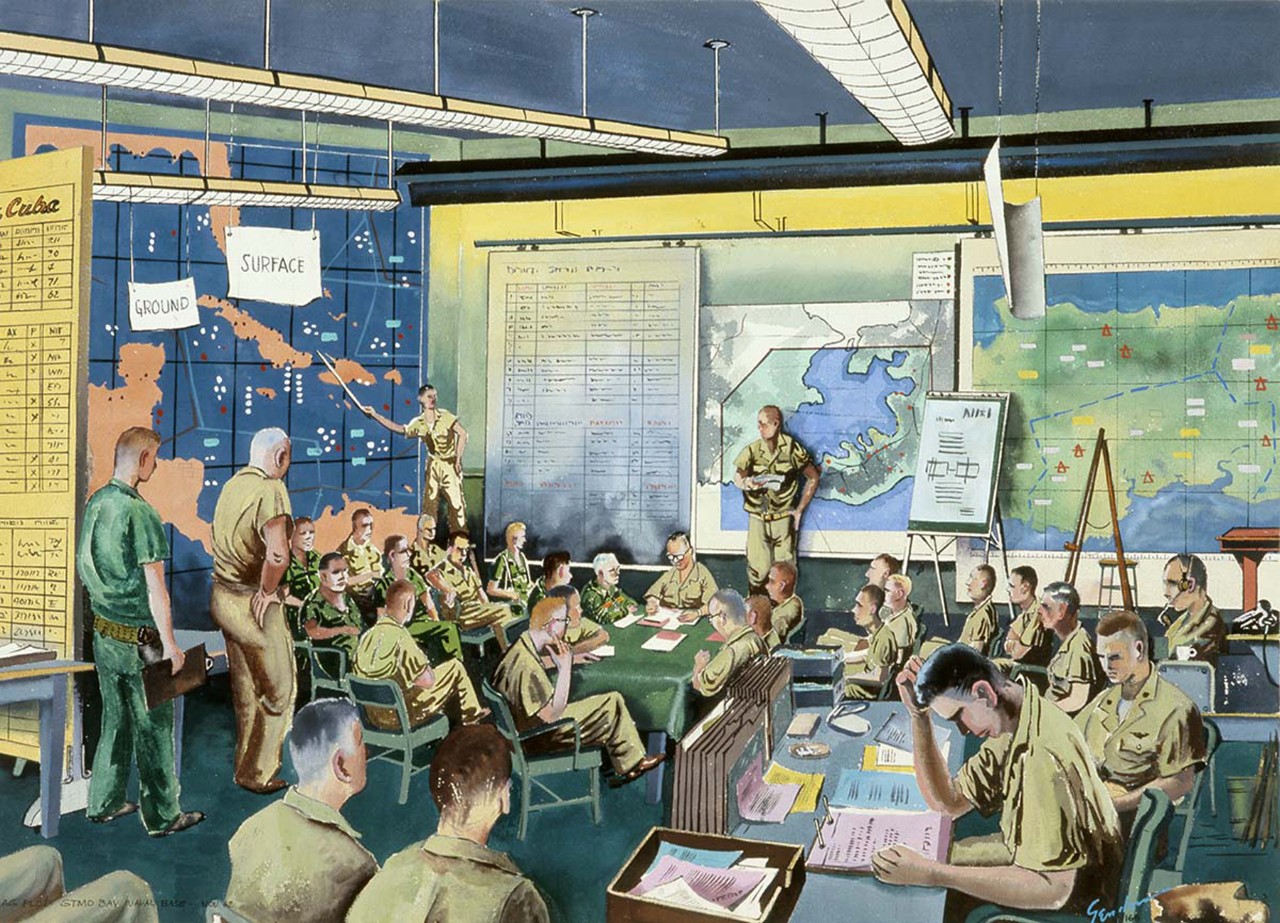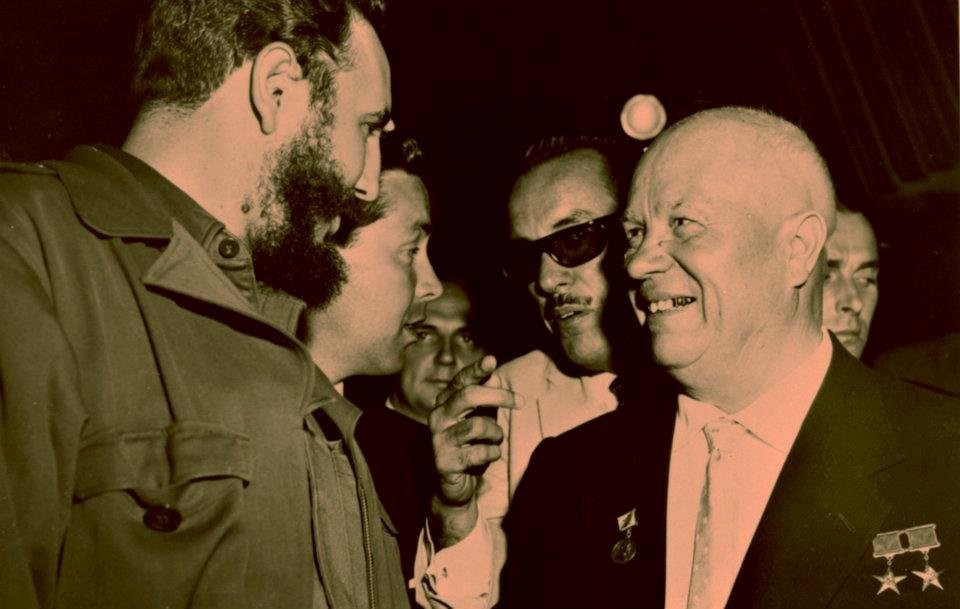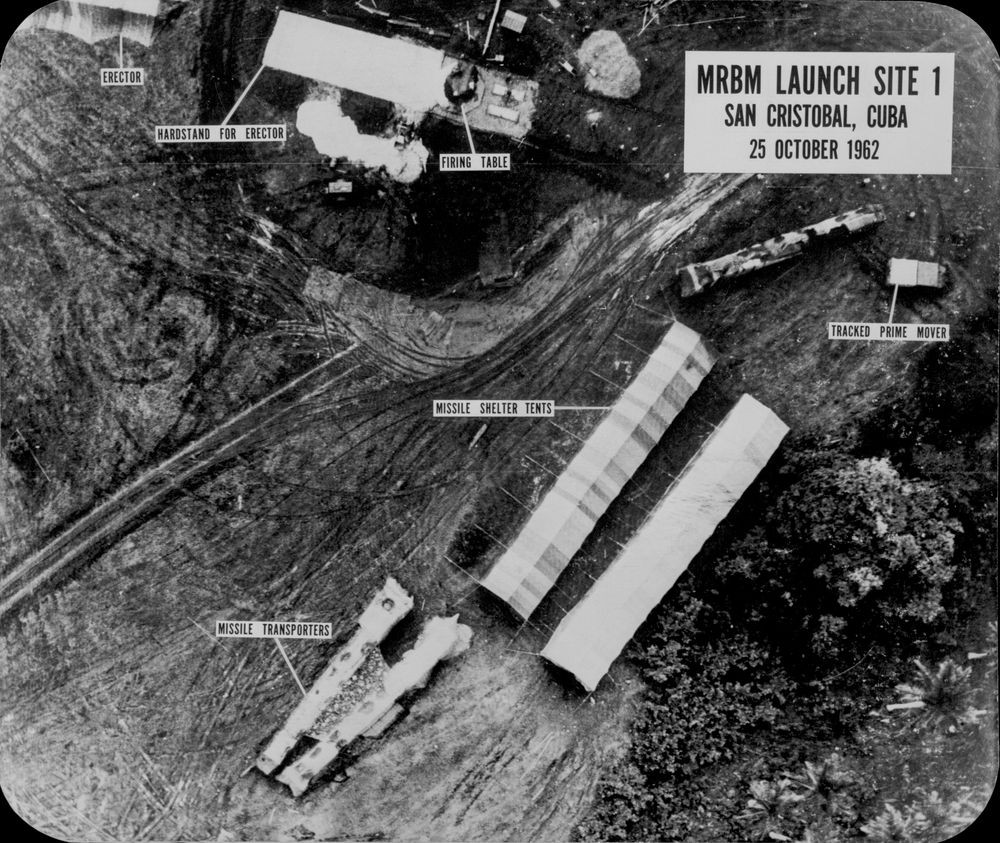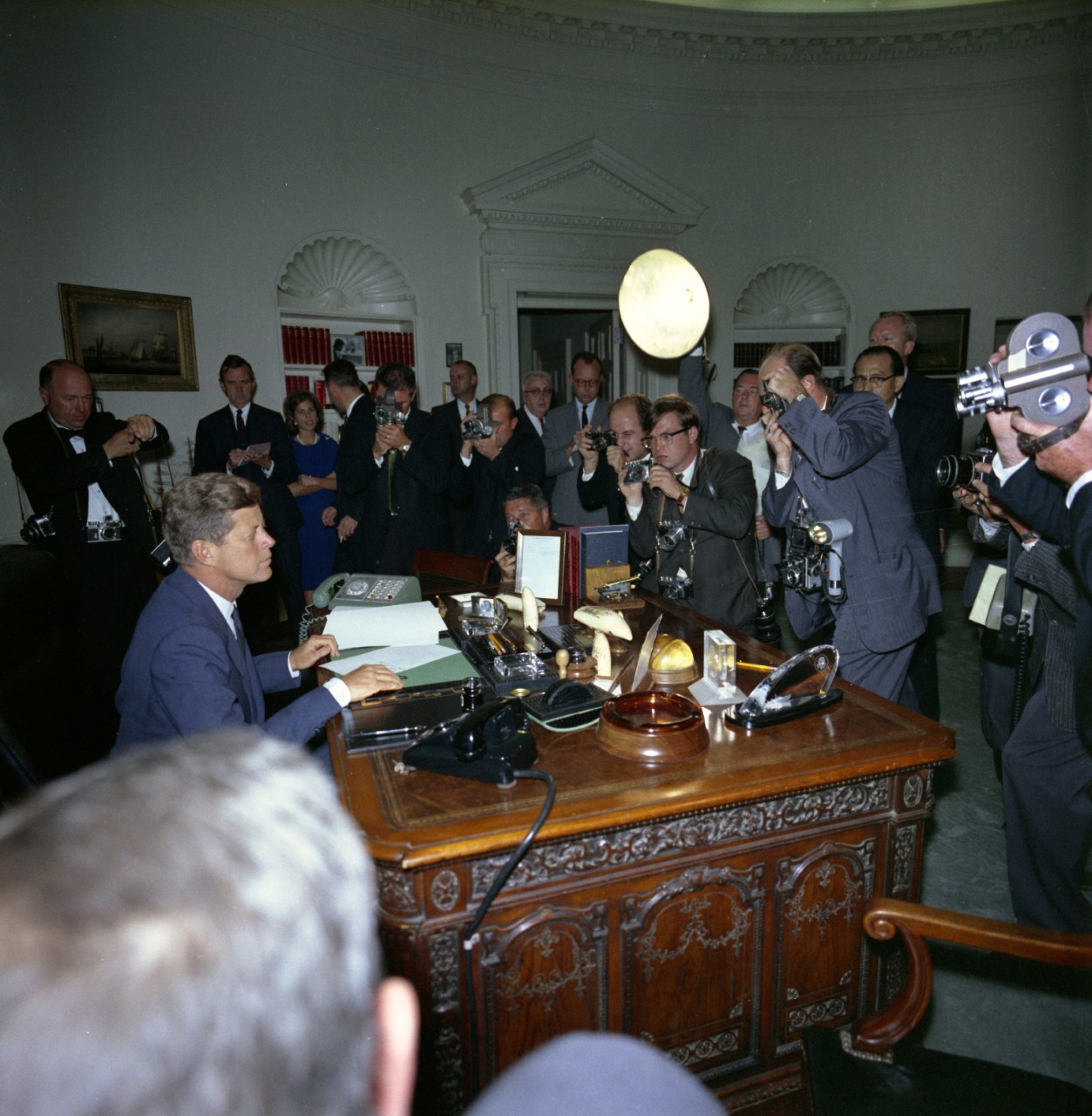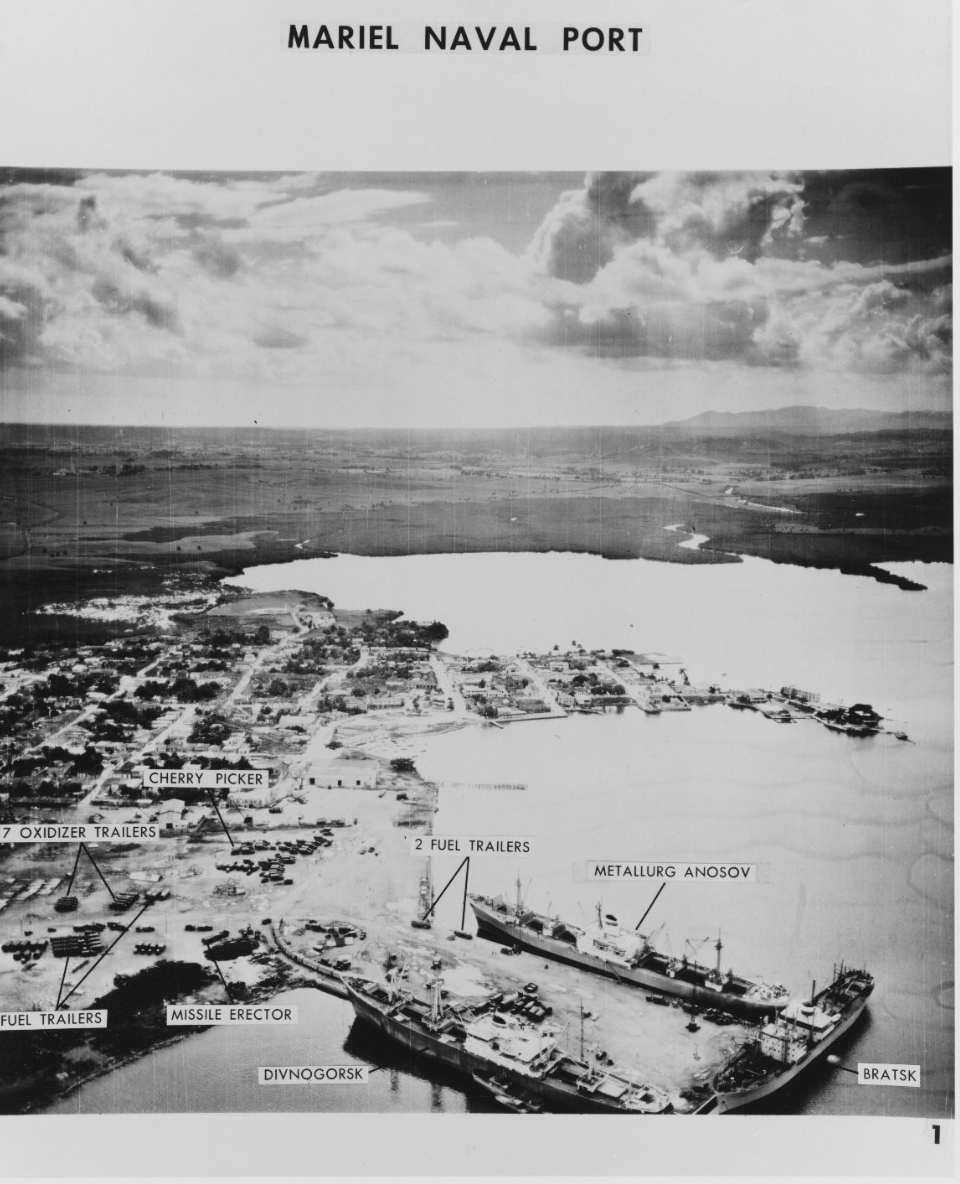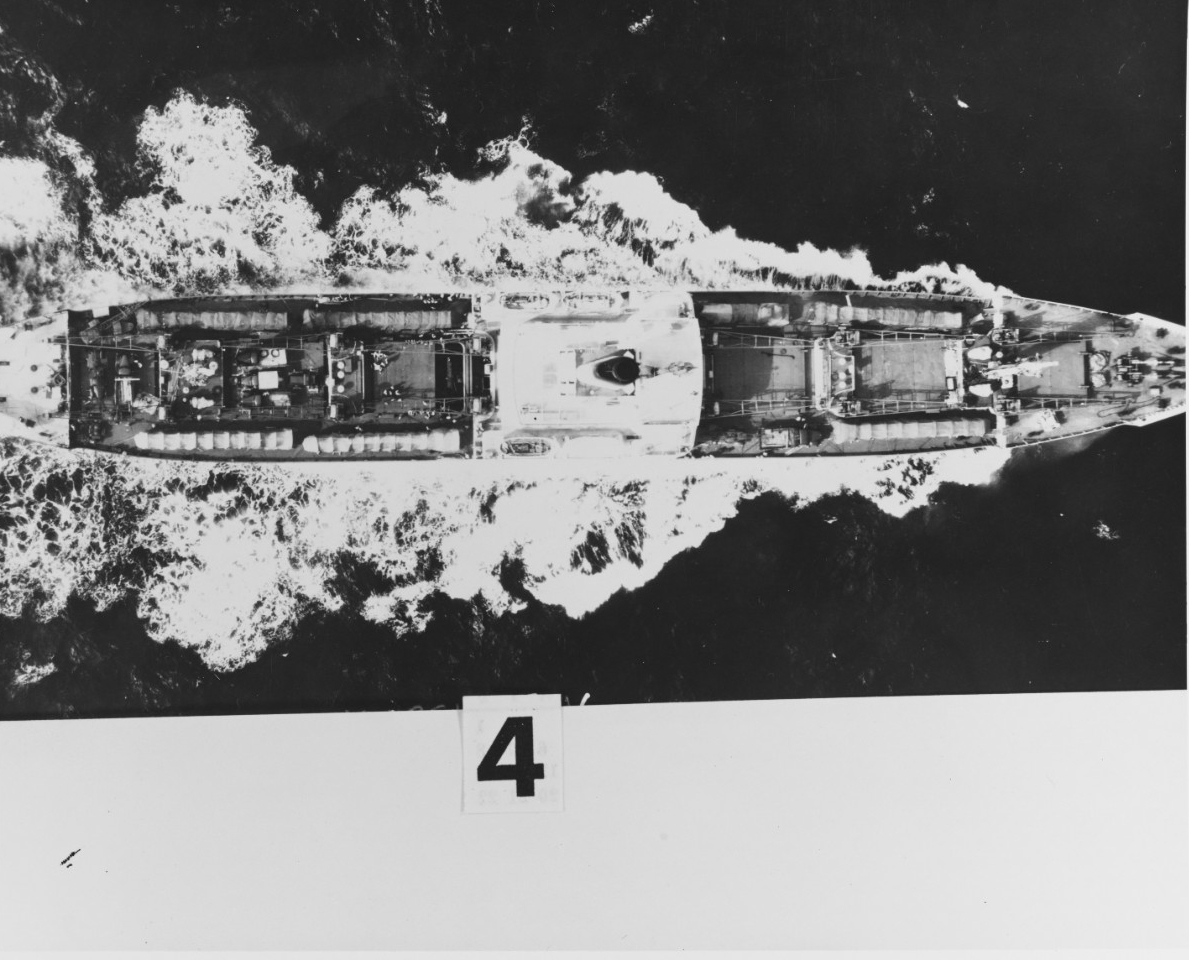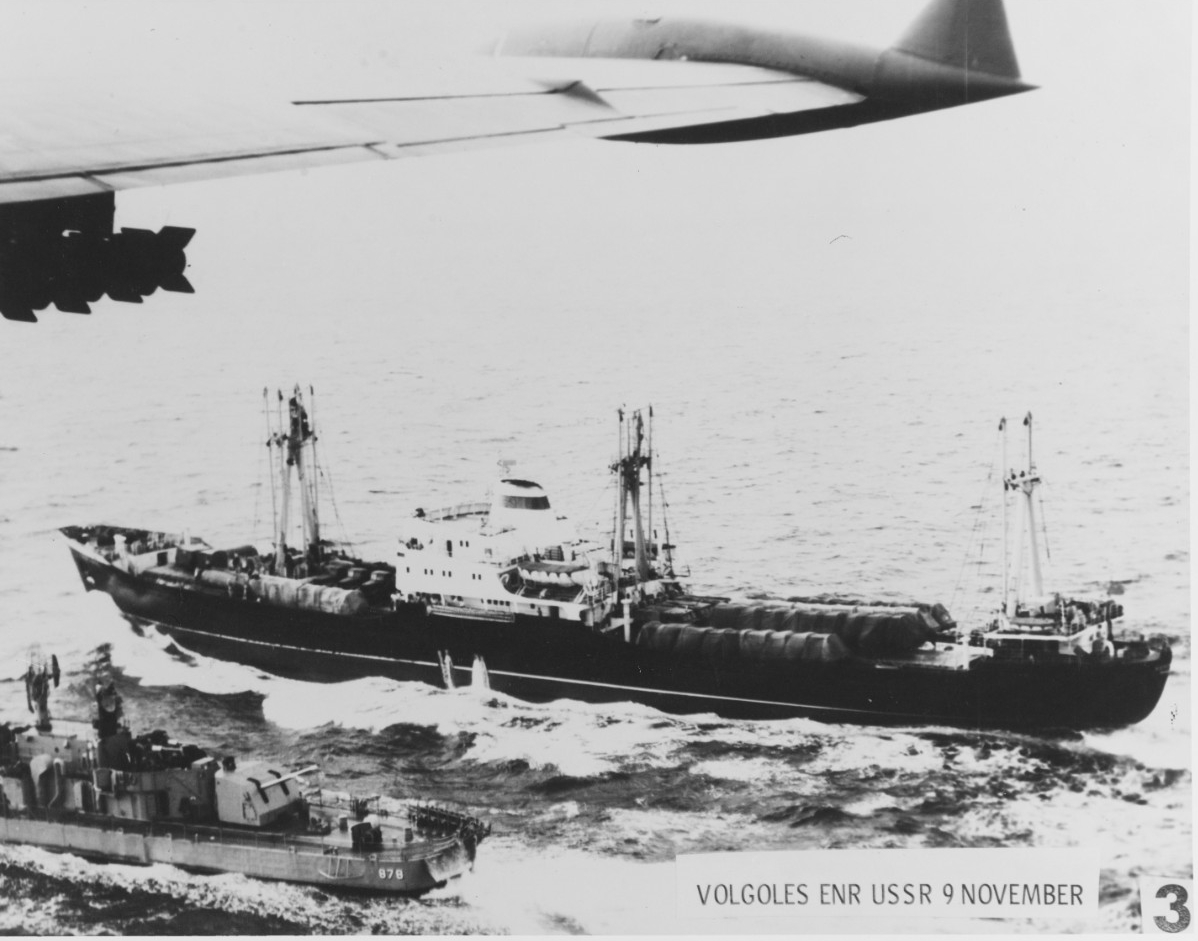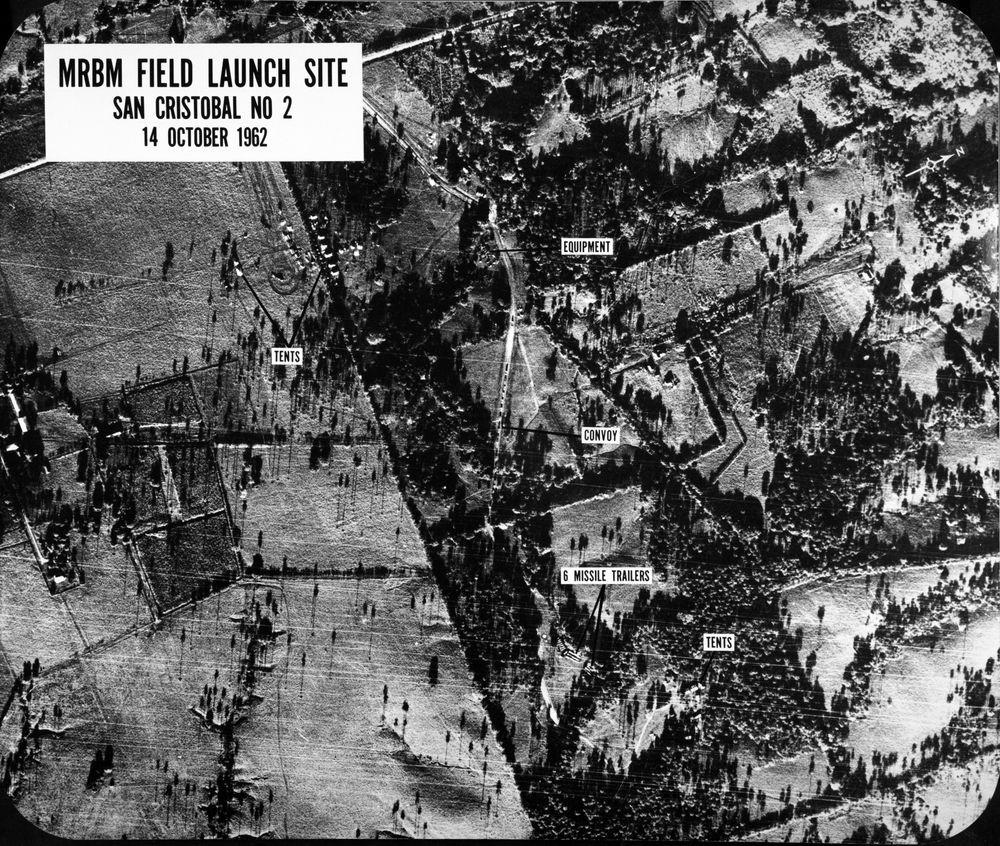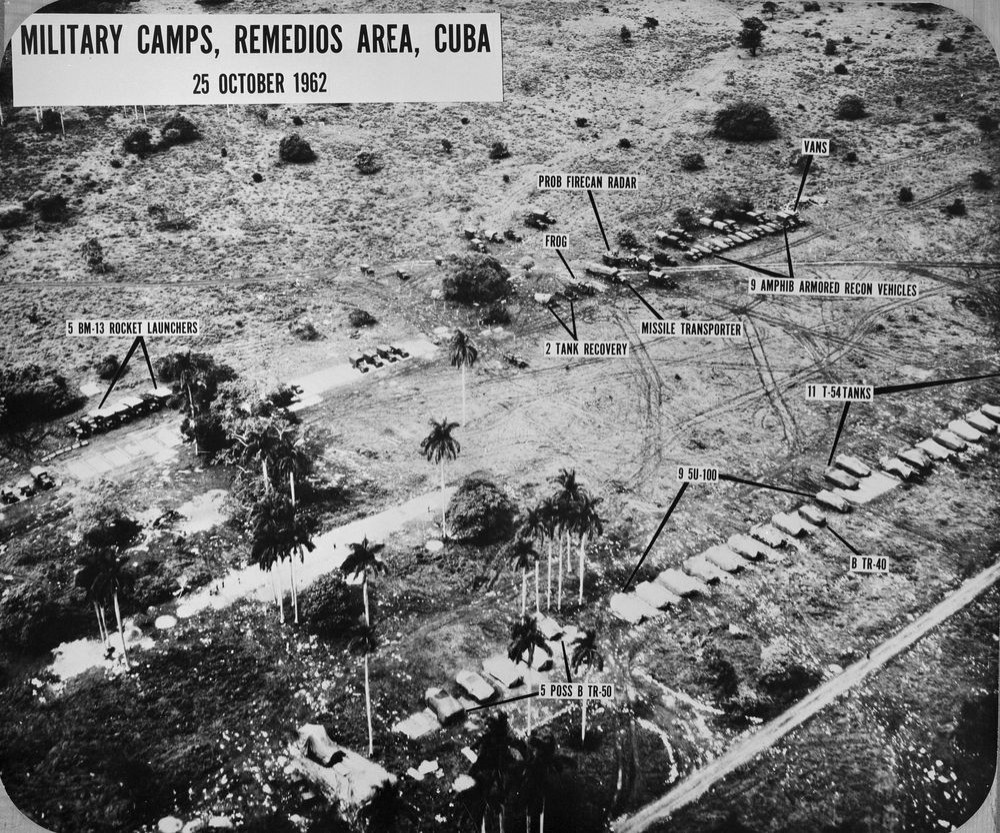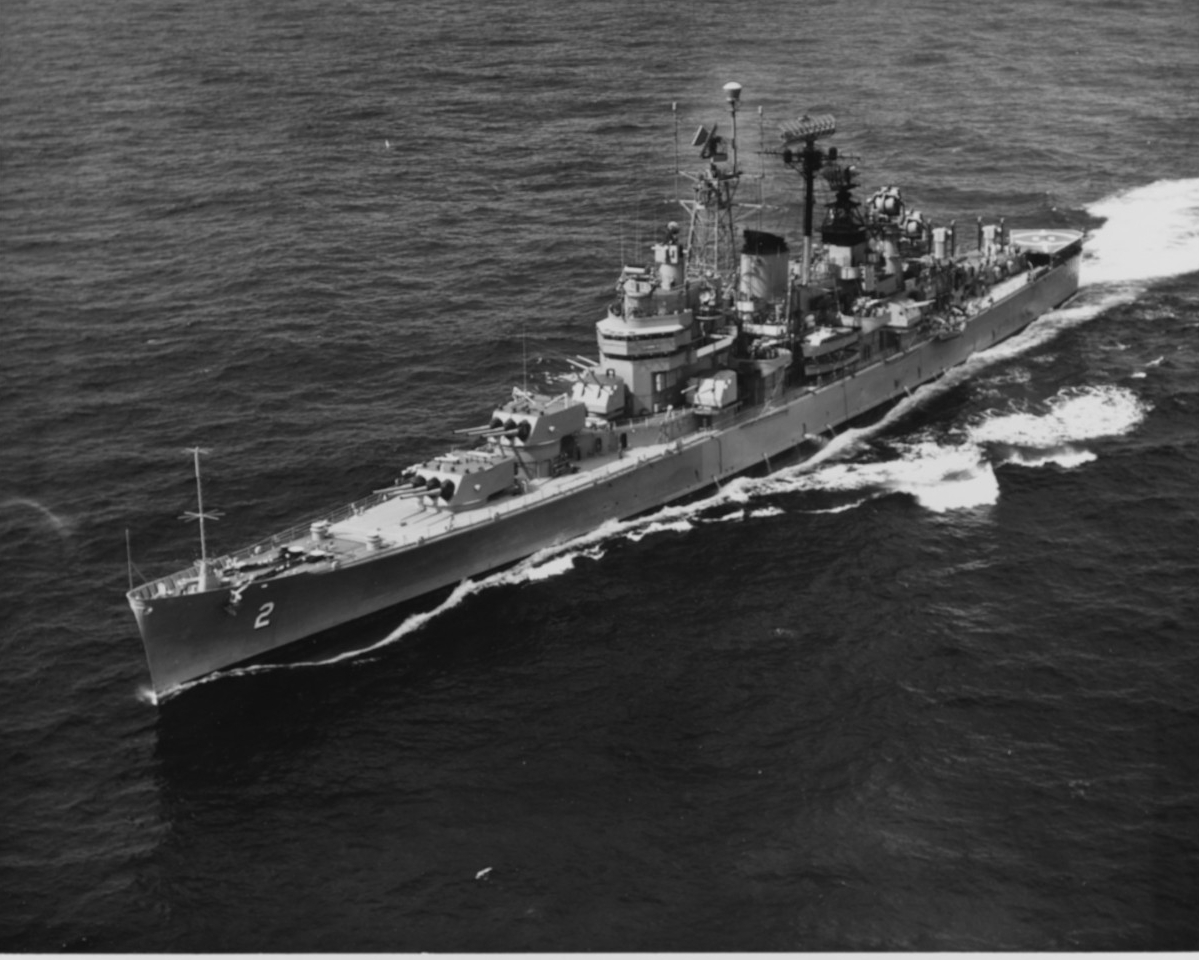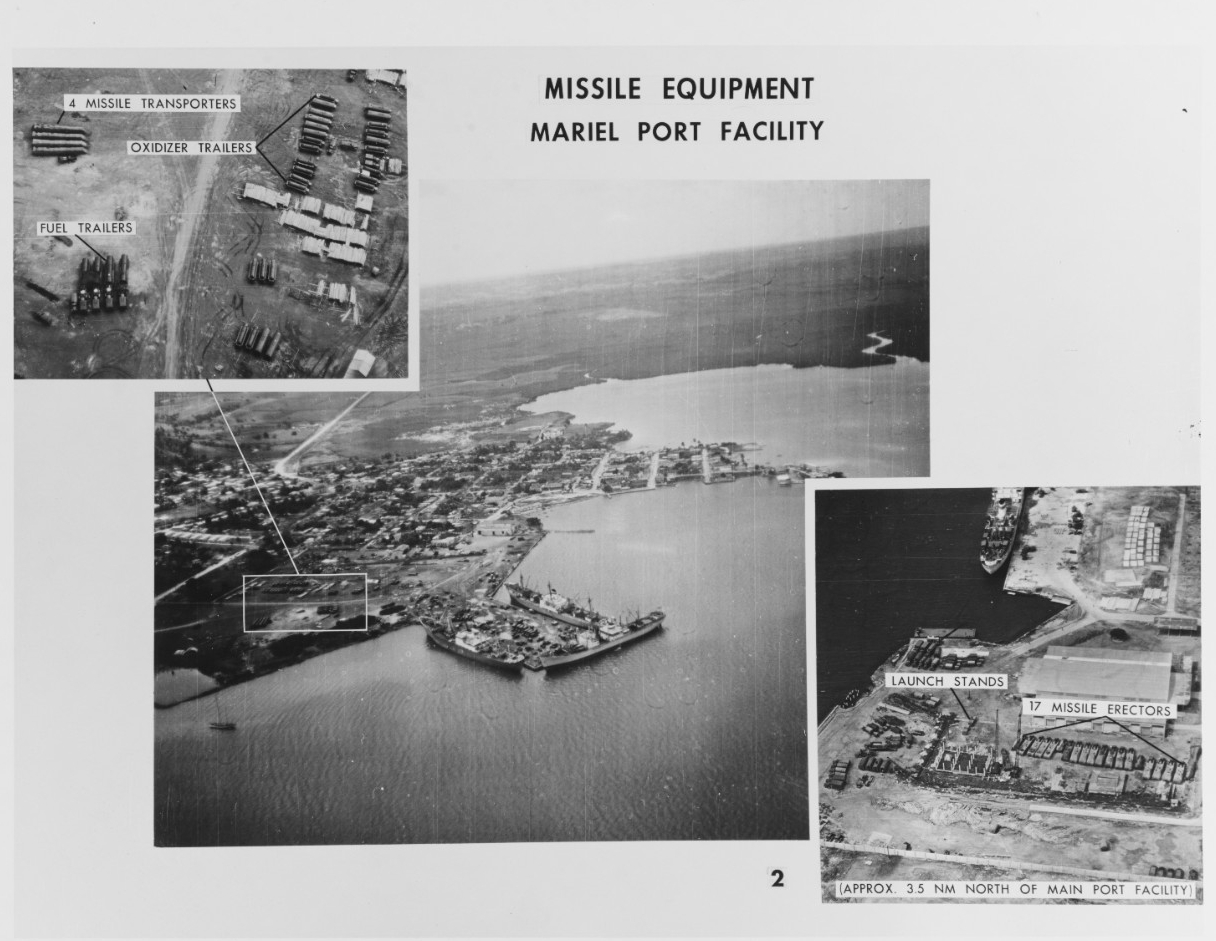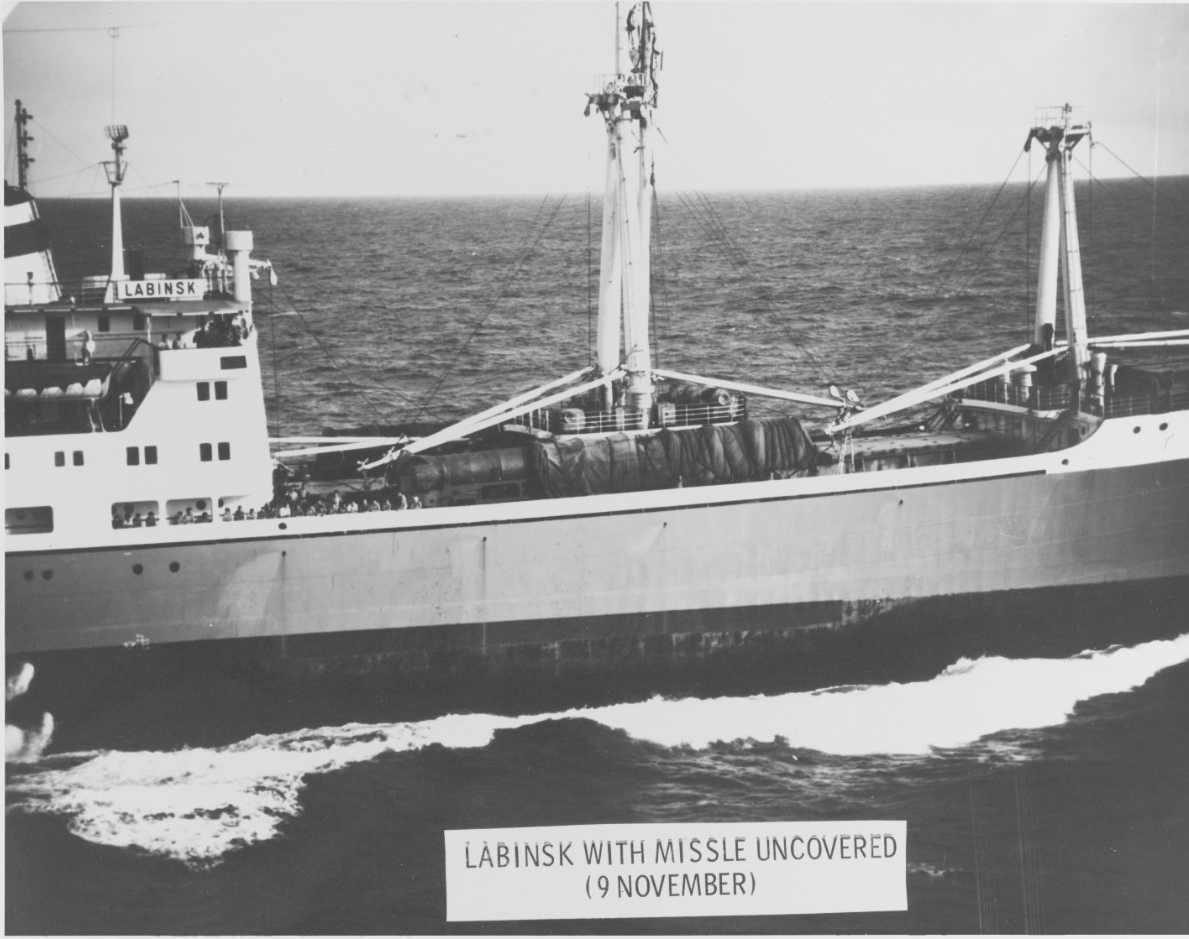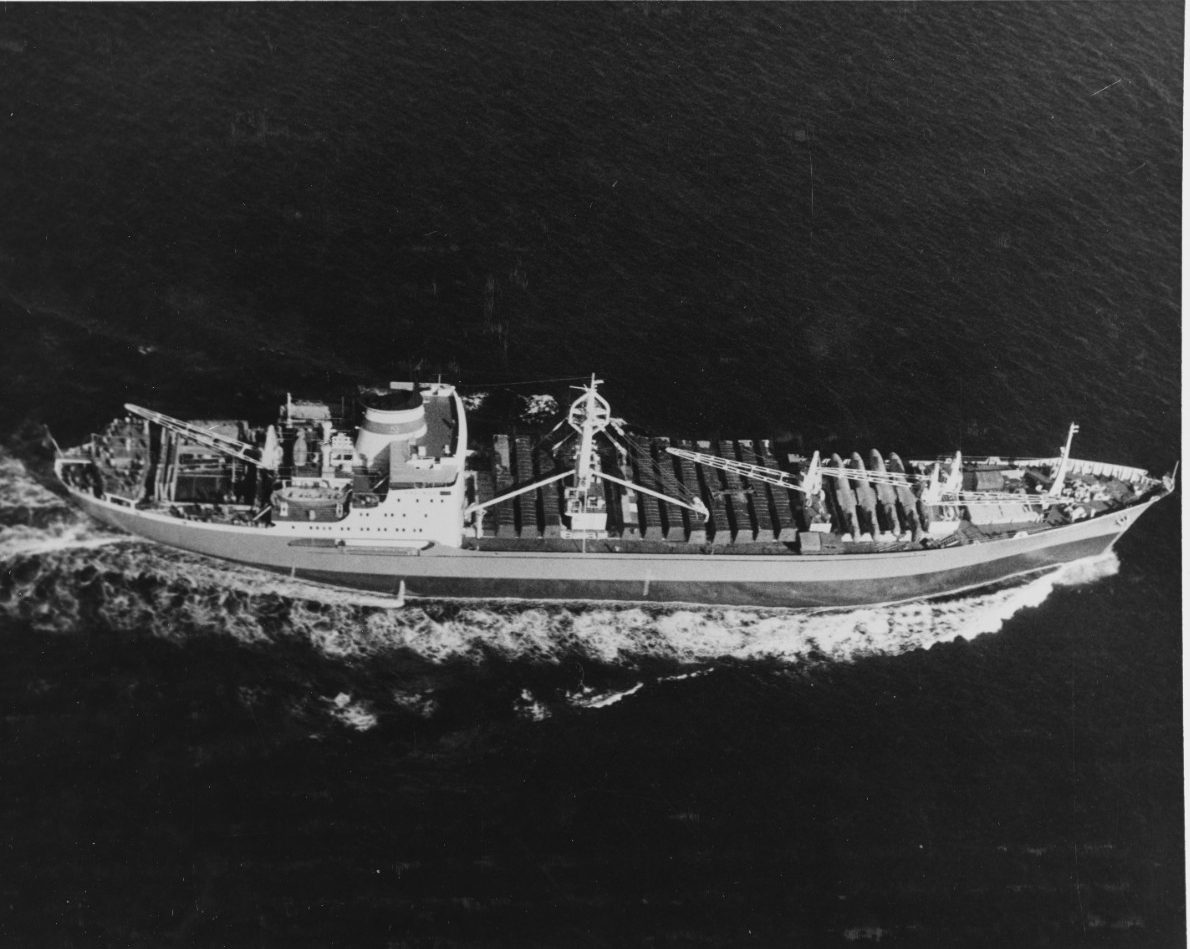- Expand navigation for Commemoration Toolkits Commemoration Toolkits
- Expand navigation for Navy Birthday Navy Birthday
- Expand navigation for World War II World War II
- National Vietnam War Veterans Day
- Expand navigation for The 9/11 Terrorist Attacks The 9/11 Terrorist Attacks
- Expand navigation for 75th Anniversary of NATO 75th Anniversary of NATO
- Expand navigation for Wars, Conflicts, and Operations Wars, Conflicts, and Operations
- American Revolution
- Quasi-War with France
- Barbary Wars
- War of 1812
- Mexican-American War
- Expand navigation for Civil War Civil War
- Expand navigation for Spanish-American War Spanish-American War
- Expand navigation for Early 20th-Century Conflicts Early 20th-Century Conflicts
- Expand navigation for World War I World War I
- Expand navigation for World War II World War II
- Expand navigation for Cold War Era Cold War Era
- Expand navigation for Korean War Korean War
- Expand navigation for Vietnam War Vietnam War
- Cuban Missile Crisis
- Expand navigation for Middle East Engagements Middle East Engagements
- POW MIA
- Pirate Interdiction and the U.S. Navy
- Expand navigation for The 9/11 Terrorist Attacks The 9/11 Terrorist Attacks
- Expand navigation for Operations in Former Yugoslavia Operations in Former Yugoslavia
- Expand navigation for Heritage Heritage
- Expand navigation for Uniforms Uniforms
- Uniforms of the U.S. Navy 1776-1783
- Uniforms of the U.S. Navy 1797
- Uniforms of the U.S. Navy 1802
- Uniforms of the U.S. Navy 1812-1815
- Uniforms of the U.S. Navy 1815
- Uniforms of the U.S. Navy 1830-1841
- Uniforms of the U.S. Navy 1841
- Uniforms of the U.S. Navy 1852
- Uniforms of the U.S. Navy 1852-1855
- Uniforms of the U.S. Navy 1862-1863
- Uniforms of the U.S. Navy 1864
- Uniforms of the U.S. Navy 1898
- Uniforms of the U.S. Navy 1900
- Uniforms of the U.S. Navy 1905-1913
- Uniforms of the U.S. Navy 1917-1918
- Uniforms of the U.S. Navy 1918-1919
- Uniforms of the U.S. Navy 1922-1931
- Uniforms of the U.S Navy 1941
- Uniforms of the U.S. Navy 1942-1943
- Uniforms of the U.S. Navy 1943-1944
- Uniforms of the U.S. Navy 1951-1952
- Uniforms of the U.S. Navy 1961
- Uniforms of the U.S. Navy 1967
- Expand navigation for Customs and Traditions Customs and Traditions
- Sailors' Tattoos
- Goats and the U.S. Navy
- Navy Athletics
- The Sailor’s Creed
- The Ship’s Bell
- Striking the Flag
- Unofficial Navy Certificates
- Precedence of Forces in Parades
- Passing Honors, National Anniversaries, and Solemnities
- Rocks and Shoals: Articles for the Government of the U.S. Navy
- Plank Owners
- Ship Naming
- Twenty-One Gun Salute
- Change of Command
- Navy Music
- Commissioning Pennant
- Ship Launching and Commissioning
- Burial at Sea
- Crossing the Line
- Expand navigation for Banners Banners
- Expand navigation for Decorations and Awards Decorations and Awards
- Expand navigation for Speak Like a Sailor Speak Like a Sailor
- Famous Navy Quotations
- Expand navigation for Origins of the Navy Origins of the Navy
- U.S. Navy History Lessons Learned
- The Navy and Marine Corps Team
- Expand navigation for "Ex Scientia Tridens": The U.S. Naval Academy "Ex Scientia Tridens": The U.S. Naval Academy
- Expand navigation for Uniforms Uniforms
- Expand navigation for Communities Communities
- Expand navigation for Chaplain Corps Chaplain Corps
- Expand navigation for Chief Petty Officer Chief Petty Officer
- Seabees
- Expand navigation for Navy Medicine Navy Medicine
- Expand navigation for Naval Aviation Naval Aviation
- Submarine Force
- Expand navigation for Surface Navy Surface Navy
- Navy Divers
- Naval Special Warfare
- Supply Corps
- Explosive Ordnance Disposal
- Expand navigation for Disasters and Phenomena Disasters and Phenomena
- Expand navigation for Organization and Administration Organization and Administration
- Leadership
- Expand navigation for Ranks Ranks
- Regulations and Policy
- Personnel
- Expand navigation for Service and Medical Records Service and Medical Records
- Expand navigation for U.S. Navy Installations U.S. Navy Installations
- Washington Navy Yard, District of Columbia
- Naval Station Norfolk, Virginia
- Naval Submarine Base New London, Connecticut
- Naval Station Mayport, Florida
- Naval Air Station Pensacola, Florida
- Naval Station Great Lakes, Illinois
- Naval Base San Diego, California
- Naval Base Kitsap, Washington
- Naval Station Pearl Harbor, Hawaii
- U.S. Fleet Activities Yokosuka, Japan
- Naval Support Activity Bahrain
- Naval Support Activity Naples, Italy
- Expand navigation for Historic Former U.S. Navy Bases and Stations Historic Former U.S. Navy Bases and Stations
- Expand navigation for Diversity Diversity
- Expand navigation for The African American Experience in the U.S. Navy The African American Experience in the U.S. Navy
- Expand navigation for Women in the U.S. Navy Women in the U.S. Navy
- Asian Americans and Pacific Islanders in the U.S. Navy
- Hispanic Americans in the U.S. Navy
- Contributions of Native Americans to the U.S. Navy
- Naval Service of LGBTQI+ Personnel
- Expand navigation for Exploration and Innovation Exploration and Innovation
- Electricity and USS Trenton
- Expand navigation for The World Cruise of the Great White Fleet The World Cruise of the Great White Fleet
- The Voyage of a Lifetime
- The Ships of the Great White Fleet
- Great White Fleet Gallery
- Beginning of the Cruise
- Fleet Leadership
- Crossing the Equator
- World Cruise Experience
- At Sea
- Puerto Rico-South America-Mexico
- U.S. West Coast
- Hawaii-Australia-New Zealand
- Japan and China
- Philippines and Ceylon (Sri Lanka)
- Suez Canal-Egypt-Turkey
- Mediterranean
- End of the Cruise
- Memorabilia
- Expand navigation for Navy Role in Space Exploration Navy Role in Space Exploration
- Polar Exploration
- The First U.S. Naval Observatory
- Bathyscaphe Trieste
- Airships & Dirigibles
- Higgins Boats
- Navy’s Use of Torpedoes
- The Nuclear Navy
- Radar and Sonar
- Navy’s Use of Unmanned Aerial Vehicles
- Naval Mine Warfare
- The Navy’s Use of Carrier Pigeons
- Expand navigation for The Steam Navy The Steam Navy
- The Steel Navy
- Expand navigation for Notable People Notable People
- Expand navigation for Presidents Presidents
- Expand navigation for Chiefs of Naval Operations Chiefs of Naval Operations
- The Office
- Admiral William S. Benson
- Admiral Robert E. Coontz
- Admiral Edward W. Eberle
- Admiral Charles F. Hughes
- Admiral William V. Pratt
- Admiral William H. Standley
- Fleet Admiral William D. Leahy
- Admiral Harold R. Stark
- Fleet Admiral Ernest J. King
- Fleet Admiral Chester W. Nimitz
- Admiral Louis E. Denfeld
- Admiral Forrest P. Sherman
- Admiral William M. Fechteler
- Admiral Robert B. Carney
- Admiral Arleigh A. Burke
- Admiral George W. Anderson Jr.
- Admiral David L. McDonald
- Admiral Thomas H. Moorer
- Admiral Elmo R. Zumwalt Jr.
- Admiral James L. Holloway III
- Admiral Thomas B. Hayward
- Admiral James D. Watkins
- Admiral Carlisle A. H. Trost
- Admiral Frank B. Kelso II
- Admiral Jeremy M. Boorda
- Admiral Jay L. Johnson
- Admiral Vernon E. Clark
- Admiral Michael G. Mullen
- Admiral Gary Roughead
- Admiral Jonathan W. Greenert
- Admiral John M. Richardson
- Admiral Michael Gilday
- Expand navigation for Master Chief Petty Officers of the Navy Master Chief Petty Officers of the Navy
- MCPON Delbert D. Black
- MCPON John D. Whittet
- MCPON Robert J. Walker
- MCPON Thomas S. Crow
- MCPON Billy C. Sanders
- MCPON William H. Plackett
- MCPON Duane R. Bushey
- MCPON John Hagan
- MCPON James L. Herdt
- MCPON Terry D. Scott
- MCPON Joe R. Campa Jr.
- MCPON Rick D. West
- MCPON Michael D. Stevens
- MCPON Steven S. Giordano
- MCPON Official Photographs
- Expand navigation for Historical Figures Historical Figures
- Expand navigation for Secretaries of the Navy Secretaries of the Navy
- Benjamin Stoddert (1798 - 1801)
- Robert Smith (1801 - 1809)
- Paul Hamilton (1809 - 1812)
- William Jones (1813 - 1814)
- Benjamin W. Crowninshield (1815 - 1818)
- Smith Thompson (1819 - 1823)
- Samuel Southard (1823 - 1829)
- John Branch, Jr. (1829 - 1831)
- Levi Woodbury (1831 - 1834)
- Mahlon Dickerson (1834 - 1838)
- James K. Paulding (1838 - 1841)
- George Edmund Badger (1841)
- Abel P. Upshur (1841 - 1843)
- David Henshaw (1843 - 1844)
- Thomas W. Gilmer (1844)
- John Y. Mason (1844-1845) (1846-1849)
- George Bancroft (1845 - 1846)
- William B. Preston (1849 - 1850)
- William A. Graham (1850 - 1852)
- John P. Kennedy (1852 - 1853)
- James C. Dobbin (1853 - 1857)
- Isaac Toucey (1857 - 1861)
- Gideon Welles (1861 - 1869)
- Adolph Edward Borie (1869)
- George M. Robeson (1869 - 1877)
- Richard W. Thompson (1877 - 1880)
- Nathan Goff, Jr. (1881)
- William Henry Hunt (1881 - 1882)
- William Eaton Chandler (1882 - 1885)
- William C. Whitney (1885 - 1889)
- Benjamin F. Tracy (1889 - 1893)
- Hilary A. Herbert (1893 - 1897)
- John D. Long (1897 - 1902)
- William H. Moody (1902 - 1904)
- Paul Morton (1904 - 1905)
- Charles J. Bonaparte (1905 - 1906)
- Victor H. Metcalf (1906 - 1908)
- Truman H. Newberry (1908 - 1909)
- George von L. Meyer (1909 - 1913)
- Josephus Daniels (1913 - 1921)
- Edwin Denby (1921 - 1924)
- Charles F. Adams, III (1929 - 1933)
- Claude A. Swanson (1933 - 1939)
- Charles Edison (1940)
- William Franklin Knox (1940 - 1944)
- James Forrestal (1944 - 1947)
- John Lawrence Sullivan (1947 - 1949)
- Francis P. Matthews (1949 - 1951)
- Dan A. Kimball (1951 - 1953)
- Robert B. Anderson (1953 - 1954)
- Charles S. Thomas (1954 - 1957)
- Thomas S. Gates (1957 - 1959)
- William Birrell Franke (1959 - 1961)
- John Bowden Connally, Jr. (1961)
- Fred Korth (1962 - 1963)
- Paul B. Fay (acting) (1963)
- Paul Henry Nitze (1963 - 1967)
- Charles Fitz Baird (acting) (1967)
- Paul R. Ignatius (1967 - 1969)
- John Hubbard Chafee (1969 - 1972)
- John William Warner (1972 - 1974)
- J. William Middendorf (1974 - 1977)
- William Graham Claytor, Jr. (1977 - 1979)
- Edward Hidalgo (1979 - 1981)
- John Lehman (1981 - 1987)
- James H. Webb (1987 - 1988)
- William L. Ball (1988 - 1989)
- Henry L. Garrett III (1989 - 1992)
- Daniel Howard (acting) (1992)
- Sean Charles O'Keefe (1992 - 1993)
- ADM Frank B. Kelso, II (acting) (1993)
- John Howard Dalton (1993 - 1998)
- Richard Jeffrey Danzig (1998 - 2001)
- Robert B. Pirie, Jr. (acting) (2001)
- Gordon R. England (2001-2003) (2003-2005)
- Susan M. Livingstone (acting) (2003)
- Hansford T. Johnson (acting) (2003)
- Donald Charles Winter (2006 - 2009)
- Raymond Edwin Mabus, Jr. (2009 - 2017)
- Sean G. J. Stackley (acting) (2017)
- Richard V. Spencer (2017 - 2019)
- Thomas B. Modly (acting) (2019-2020)
- James E. McPherson (acting) (2020)
- Kenneth J. Braithwaite (2020-2021)
- Thomas W. Harker (acting) (2021)
- Carlos Del Toro (2021-present)
- Medal of Honor Recipients
- Expand navigation for Namesakes Namesakes
- Sergeant Cornelius H. Charlton
- Private First Class Oscar P. Austin
- Civil Rights Activist Medgar Evers
- Private George Watson
- Cook First Class William Pinckney
- Commander Mary Sears
- Rear Admiral Grace Hopper
- Franklin and Eleanor Roosevelt
- Senator Daniel K. Inouye
- Private First Class Herbert K. Pililaau
- Sergeant First Class Rodney J.T. Yano
- First Lieutenant Baldomero Lopez
- Master Sergeant Roy Benavidez
- Civil Rights Activist Cesar Chavez
- Admiral David Glasgow Farragut
- Private First Class Fernando Garcia
- Sergeant Alfredo Gonzalez
- Sergeant Rafael Peralta
- Chief Petty Officer James E. Williams
- Guide and Interpreter Sacagawea
- Sergeant Darrell Samuel Cole
- Lenah Sutcliffe Higbee
- Captain Thomas J. Hudner, Jr.
- Expand navigation for Trailblazers Trailblazers
- Expand navigation for Notable Ships Notable Ships
- Expand navigation for U.S. Navy’s Six Original Frigates U.S. Navy’s Six Original Frigates
- Expand navigation for Ships of Sail Ships of Sail
- Expand navigation for Sail-to-Steam Sail-to-Steam
- Expand navigation for Modern Ships Modern Ships
- Alchiba (AK-23)
- Arizona (BB-39)
- Cole (DDG-67)
- Fletcher (DD-445)
- Harmon (DE-678)
- Houston (CA-30)
- Indianapolis (CA-35)
- Jacob Jones (DD-61)
- Johnston (DD-557)
- Maddox (DD-731)
- Missouri (BB-63)
- O'Bannon (DD-450)
- Pueblo (AGER-2)
- Samuel B. Roberts (FFG-58)
- San Diego (CL-53)
- San Francisco (CA-38)
- Tripoli (LPH-10)
- Turner Joy (DD-951)
- Washington (BB-56)
- Expand navigation for Aircraft Carriers Aircraft Carriers
- Expand navigation for Submarines Submarines
- Cuban Missile Crisis
- Presidents
- People-Places-Things--Russian
- Historical Summary
- Cold War
- Navy Leadership
- Image (gif, jpg, tiff)
- NHHC
Cuban Missile Crisis
In the fall of 1962, the Soviet Union began construction on ballistic missile launch sites in Cuba. The United States responded with a naval blockade. For thirteen days, the fear of impending nuclear war continued until an agreement was reached for the removal of the weapons. Painting, watercolor on paper; by Richard Genders; 1962; unframed dimensions 20H X 28W. Accession#: 88-190-BT.
In the fall of 1962, the United States and the Soviet Union came as close as they ever would to global nuclear war. Hoping to correct what he saw as a strategic imbalance with the United States, Soviet Premier Nikita S. Khrushchev began secretly deploying medium- and intermediate-range ballistic missiles to Fidel Castro's Cuba. Once operational, these nuclear-armed weapons could have been used on cities and military targets in most of the continental United States. Before this happened, however, U.S. intelligence discovered Khrushchev's brash maneuver. In what became known as the Cuban Missile Crisis, President John F. Kennedy and an alerted and aroused American government, military, and public compelled the Soviets to remove not only their missiles, but also all of their offensive weapons, from Cuba.
The U.S. Navy played a pivotal role in this crisis, demonstrating the critical importance of naval forces to the national defense. The Navy, in cooperation with the other U.S. armed forces and allies, strategically employed military power in such a way that the President did not have to resort to war to protect vital Western interests. Khrushchev realized that his missile and bomber forces were no match for the Navy's powerful Polaris missile-firing submarines and the Air Force's land-based nuclear delivery systems once they became fully operational. Naval forces under the U.S. Atlantic Command, headed by Admiral Robert L. Dennison, steamed out to sea, intercepting both merchant shipping enroute to Cuba and Soviet submarines operating in the area. U.S. destroyers and frigates, kept on station through underway replenishment by oilers and stores ships, maintained a month-long naval quarantine of the island. Radar picket ships, supported by Navy fighters and airborne early warning planes, assisted the Air Force's Air Defense Command in preparing to defend American airspace from Soviet and Cuban forces. Playing a vital role, Navy aerial photographic and patrol aircraft observed the deployment of Soviet offensive weapons into Cuba (and eventually monitored their withdrawal by sea).
As the unified commander for the Caribbean, Dennison was responsible for readying Army, Air Force, Marine, and Navy assault forces for a possible invasion of Cuba. He also served as the Commander in Chief, U.S. Atlantic Fleet. The aircraft carriers, destroyers, and Marine forces of the subordinate Second Fleet, under Vice Admiral Alfred G. Ward, were poised to launch air, naval gunfire, and amphibious strikes from the sea against Soviet and Cuban forces ashore. With speed and efficiency, other fleet units reinforced the Marine garrison at Guantanamo on Cuba's southeastern tip and evacuated American civilians. Dennison also coordinated the maritime support operations carried out by Canadian, British, Argentine, and Venezuelan forces.
Khrushchev, faced with the armed might of the United States and its allies, had little choice but to find some way out of the difficult situation in which he had placed himself and his country. President Kennedy did not press the advantage that the strength of U.S. and allied naval and military forces gave him. Thus, the Soviet leader was able to peacefully disengage his nation from this most serious of Cold War confrontations.
*****
Suggested Reading
- Online Reading Room: Cuban Missile Crisis
- CIA Documents on the Cuban Missile Crisis
- Foreign Relations of the United States, 1961–1963, Volume XI, Cuban Missile Crisis and Aftermath
- Department of State: The Cuban Missile Crisis, October 1962
- National Security Archive: The Cuban Missile Crisis
- U.S. Navy Ships and Units Which Received the Armed Forces Expeditionary Medal for Participating in the Cuban Missile Crisis, 1962
- John F. Kennedy Presidential Library and Museum: Cuban Missile Crisis
- Department of Defense Cuban Missile Crisis Briefing Materials
- The Naval Quarantine of Cuba, 1962
- The Naval Quarantine of Cuba, 1962: Quarantine, 22–26 October
- A New Look at the Cuban Missile Crisis
- “Cordon of Steel: The U.S. Navy and the Cuban Missile Crisis” by Curtis A. Utz (5.6 MB pdf download)
- “More Bang for the Buck:” U.S. Nuclear Strategy and Missile Development 1945–1965
- Cuban Missile Crisis: U.S. Naval Aviation Operations (29 KB pdf download)
Selected Imagery
Low altitude reconnaissance photograph of medium-range ballistic missile (MRBM) launch site number 1 in San Cristobal, Cuba showing missile shelter tents, launch pad, transporters, and other equipment. United States. Department of Defense. Department of Defense Cuban Missile Crisis Briefing Materials. (John F. Kennedy Presidential Library and Museum, Boston. Accession Number: PX66-20:16)
Cuban Missile Crisis. Low-level aerial photograph of Mariel Naval port, Cuba, taken 2 November 1962, showing missile support equipment at the port being prepared for loading on Soviet ships for removal from Cuba. Soviet ships present are Divnogorsk, Bratsk, and Metallurg Anosov. (National Archives. Catalog#: USN 711210)
High altitude aerial reconnaissance photograph of medium-range ballistic missile (MRBM) launch site number 2 in San Cristobal, Cuba, 14 October 1962. United States. Department of Defense. Department of Defense Cuban Missile Crisis Briefing Materials. John F. Kennedy Presidential Library and Museum, Boston. (Accession number: PX66-20:8)
Low altitude aerial photograph made over a portion of the Remedios-area military camp in Cuba on 25 October 1962, showing a Soviet FROG missile with transporter and launcher, 130mm rocket launchers, SU-100 assault guns, T-54 tanks, and other weapons, vehicles, and associated equipment. United States. Department of Defense. Department of Defense Cuban Missile Crisis Briefing Materials. John F. Kennedy Presidential Library and Museum, Boston. Accession Number: PX66-20:82.
Cuban Missile Crisis. Aerial reconnaissance photos of Mariel Naval port, Cuba, and vicinity, taken 4 November 1962, showing missiles and support equipment being prepared for removal from Cuba. The three Soviet freighters in the center photo are Divnogorsk at left, Metallurg Anosov at top center, and Bratsk at right, at end of pier. (National Archives. Catalog#: USN 711211)
Footnotes
- Accessibility/Section 508 |
- Employee Login |
- FOIA |
- NHHC IG |
- Privacy |
- Webmaster |
- Navy.mil |
- Navy Recruiting |
- Careers |
- USA.gov |
- USA Jobs
- No Fear Act |
- Site Map |
- This is an official U.S. Navy web site

